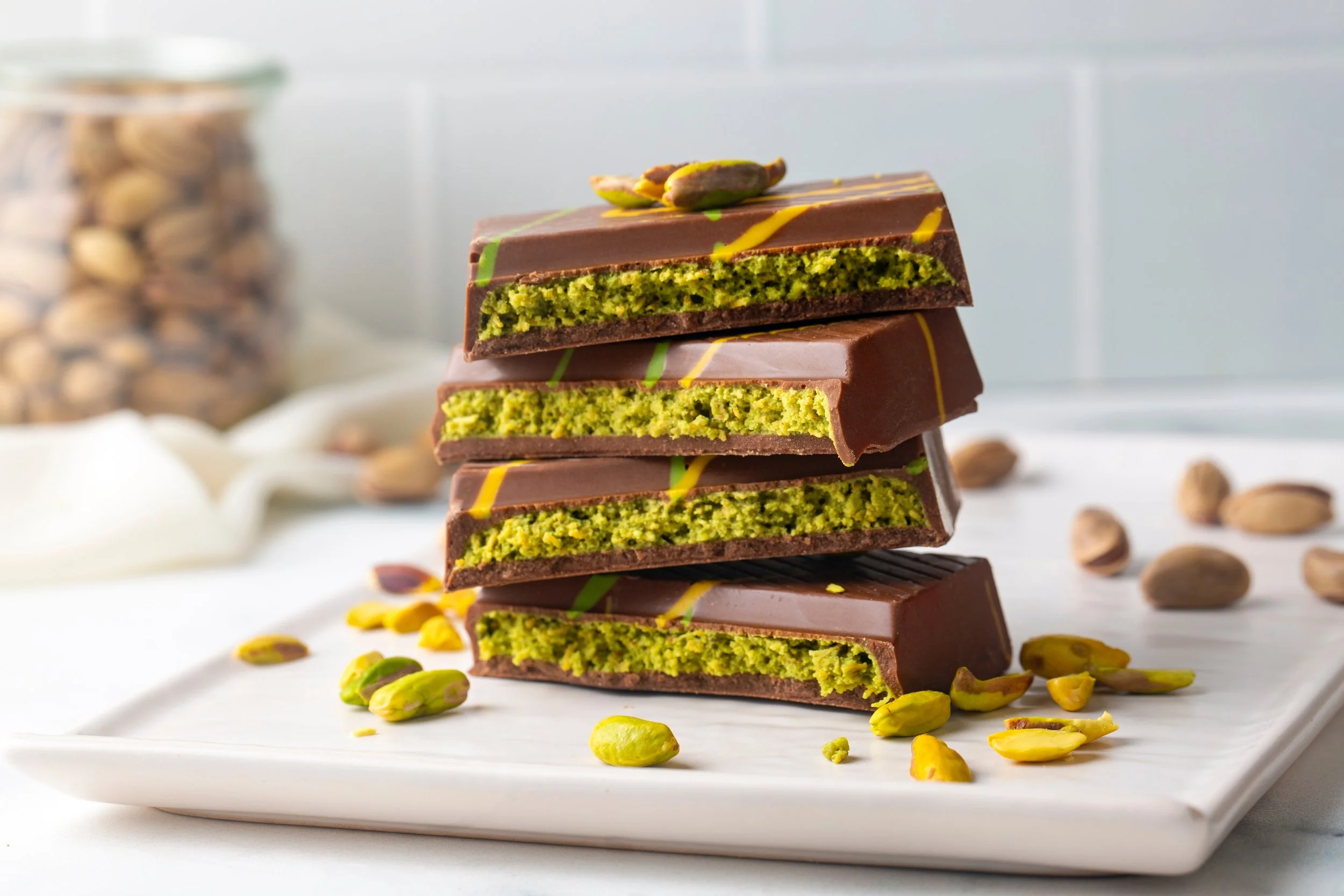The Rise and Fade of Dubai Chocolate: Hype-Driven Marketing in the Age of Illusions
Not all trends are gold, and not all gold needs to trend. Dubai Chocolate, once the poster child of viral luxury food marketing, proves just how far storytelling, exclusivity, and slick packaging can take a rather ordinary product until reality catches up.
Act I: How a Mediocre Product Became a Global Sensation
Dubai Chocolate wasn’t revolutionary. Pistachio chocolates have long been a staple product of the Turkish market, so what’s new here?
While Dubai Chocolate features intriguing ingredients such as kataifi pastry, pistachio cream, and tahini, elements not typically associated with mainstream chocolate, the product itself is less of a true innovation and more of a refined interpretation.
Variations of these flavor profiles have existed in the market for years, from pistachio-filled pralines to chocolate-infused baklava and kataifi-inspired confections. What sets Dubai Chocolate apart is not the originality of its components, but the way they’ve been repackaged into an elevated sensory and visual experience.
It wasn’t a rare cacao bean discovery from the Amazon. It wasn’t infused with ancient Arabian spices or crowned with edible gold leaf (though the branding might suggest otherwise). At its core, it was decent chocolate dressed in the language of opulence.
From one day to another, it was everywhere. We saw it on social media, heard about it from friends, and read about it in newspapers and magazines, and it was inevitable that we would want to try it.
So, how did Dubai Chocolate go viral?
The word “Dubai” evokes excess, luxury, and elite experiences. The branding initially capitalized on this subconscious association. Dubai Chocolate wasn’t just a sweet, it was a statement.
Influencers across the globe unwrapped gold-toned boxes, bit into the chocolate with expressions of reverence, and posted it across TikTok and Instagram. FOMO (fear of missing out) took over. Everyone suddenly had to try it, even if they couldn’t quite explain why.
Scarcity is a time-tested psychological trigger. Strategic stock-outs and “exclusive drops” created the illusion of a premium product you were lucky to get your hands on.
In many Gulf countries, premium chocolates are a staple in social gifting. Dubai Chocolate became the new showstopper at weddings, business meetings, and hospitality lounges.
It was a marketing masterclass in creating desire where none was initially warranted.
Act II: The Hype Plateau
But the sugar rush couldn’t last forever.
Once the viral wave settled, the actual experience kicked in and didn’t quite match the expectations. Consumers began comparing it to established luxury chocolate brands like Godiva, Patchi, or even artisanal bean-to-bar makers from Europe or Japan.
Some people found it too expensive, some too sweet, and some too artificial. And when judged solely on taste, texture, and ingredient quality, Dubai Chocolate didn’t hold up.
Moreover, as the product became more widely available and the mystery wore off, its exclusivity, once its most significant asset, diminished. Initially, the product was sold via a specific brand for a premium price. Once discounters and small supermarkets started offering similar products, the feeling of exclusivity vanished.
What was once a social currency quickly turned into a forgotten fad. The brand is now recalibrating, moving away from mass-market hype and repositioning itself in niche gifting and travel retail.
Act III: The Way Forward
The story isn’t over for Dubai Chocolate—but Act III requires more substance than sparkle. Like all brands that grow on sudden trends and hype, Dubai Chocolate must prove its long-term value and ensure a safe position among the competitors.
After all, fame fades, but quality endures. For Dubai Chocolate, several potential exit points remain. A unique flavor profile, sustainable sourcing, or regional collaborations could restore credibility. In addition, rather than generic luxury, tapping into the richness of Middle Eastern culture, heritage ingredients, or local craftsmanship could offer a deeper, more authentic narrative in the long run.
Marketing Lessons for Brands: Substance, Timing, and the Mirage of Exclusivity
Dubai Chocolate’s journey is more than a case study in hype; it’s a cautionary tale, and a source of inspiration for modern marketers.
Hype is a spark, not a strategy: Marketing virality can generate traffic, sales, and attention, but the fall is swift if the product lacks staying power. Use virality to open doors, not as the foundation of your brand.
Exclusivity must be earned, not “encouraged” via influencer campaigns: Authentic premium brands are backed by heritage, craftsmanship, or unmatched quality. Artificial scarcity can create buzz, but it’s not sustainable if the product isn’t worth chasing.
Regional branding is powerful, but must be authentic: “Dubai” worked as a lure, but brands must follow up with cultural relevance and originality, not just name-dropping a luxurious city to sell an average product.
Remember charcoal ice cream, rainbow bagels, or unicorn lattes? They dominated feeds and then disappeared. Unless reinvented, such products become footnotes in internet history.
Dubai Chocolate succeeded not because it was extraordinary, but because it felt extraordinary. It sold a dream, packaged it beautifully, and delivered just enough novelty to ignite curiosity.
But in today’s consumer landscape, experience eventually eclipses illusion. There are too many trends, and most can’t stay around for too long as consumers get bored quickly. Once the Instagram unboxing is over, the taste, the story, and the real value linger. Brands must turn initial sparkle into lasting substance if they want to go beyond the hype.
Because in the long game of brand building, value matters.

